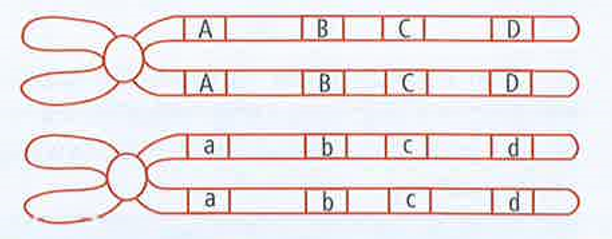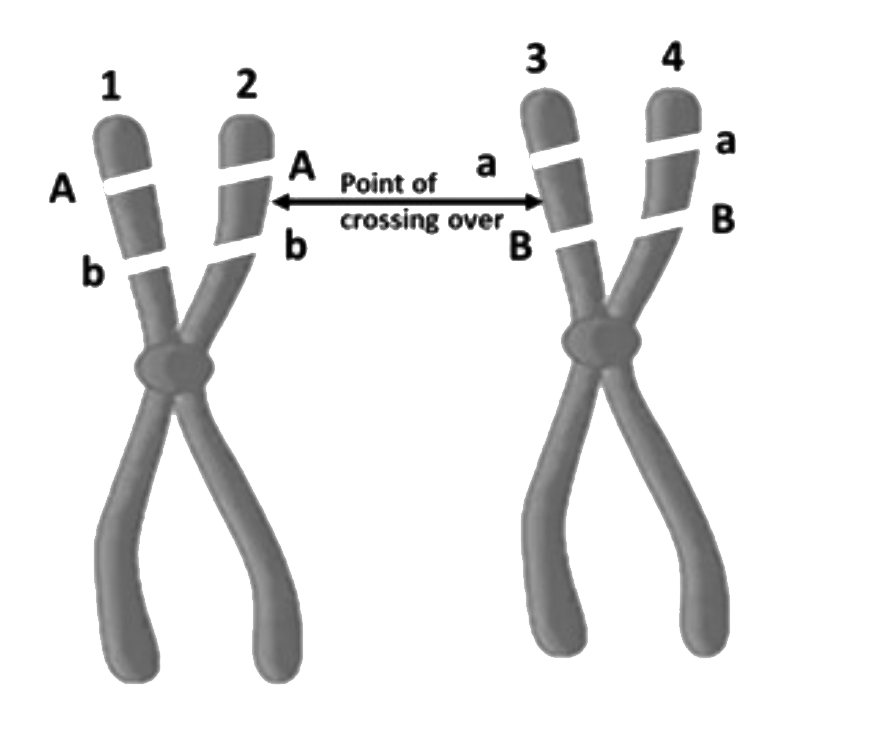During meiosis, crossing over occurs between
Sister chromatids of homologous chromosomes
Sister chromatids of non-homologous chromosomes
Non-sister chromatids of homologous chromosomes
Non-sister chromatids of non-homologous chromosomes
Step-by-Step Solution:
1. Understanding Meiosis: Meiosis is a type of cell division that reduces the chromosome number by half, resulting in the formation of gametes (sperm and eggs). It consists of two successive divisions: meiosis I and meiosis II.
2. Identifying the Stage of Crossing Over: Crossing over occurs during the prophase I stage of meiosis. This is when homologous chromosomes pair up and exchange genetic material.
3. Defining Homologous Chromosomes: Homologous chromosomes are pairs of chromosomes that have the same structure and carry genes for the same traits, but may have different alleles (variations of a gene).
4. Understanding Non-Sister Chromatids: Each chromosome consists of two sister chromatids. In a homologous pair, the chromatids from different chromosomes are referred to as non-sister chromatids. These are the chromatids that participate in crossing over.
5. Conclusion: Therefore, during meiosis, crossing over occurs specifically between the non-sister chromatids of homologous chromosomes.
Final Answer: Crossing over occurs between non-sister chromatids of homologous chromosomes.
---
Topper's Solved these Questions
Similar Questions
Knowledge Check
Given diagram shows a pair of homologous chromosomes during meiosis

Maximum crossing over will occur between genesAA and a,D and dBC and d, c and DCB and c, b and CDA and d, a and D
Two homologous chromosomes are depicted in the diagram given below. Crossing over occurs between chromatid 2 and chromatid 3 at the point as depicted .

The gametes produced as a result of this crossing over will be
View SolutionFrequency of crossing over occurring between two gene located on the same chromosome depends up
View SolutionMeiosis occurs in
View SolutionMeiosis occurs in
View SolutionMeiosis occurs in
View SolutionSynapsis, chiasma formation and crossing Over occur between homologous chromosomes in ………………………… of meiosis.
View SolutionIn meiosis crossing over is initiated at
View Solution
